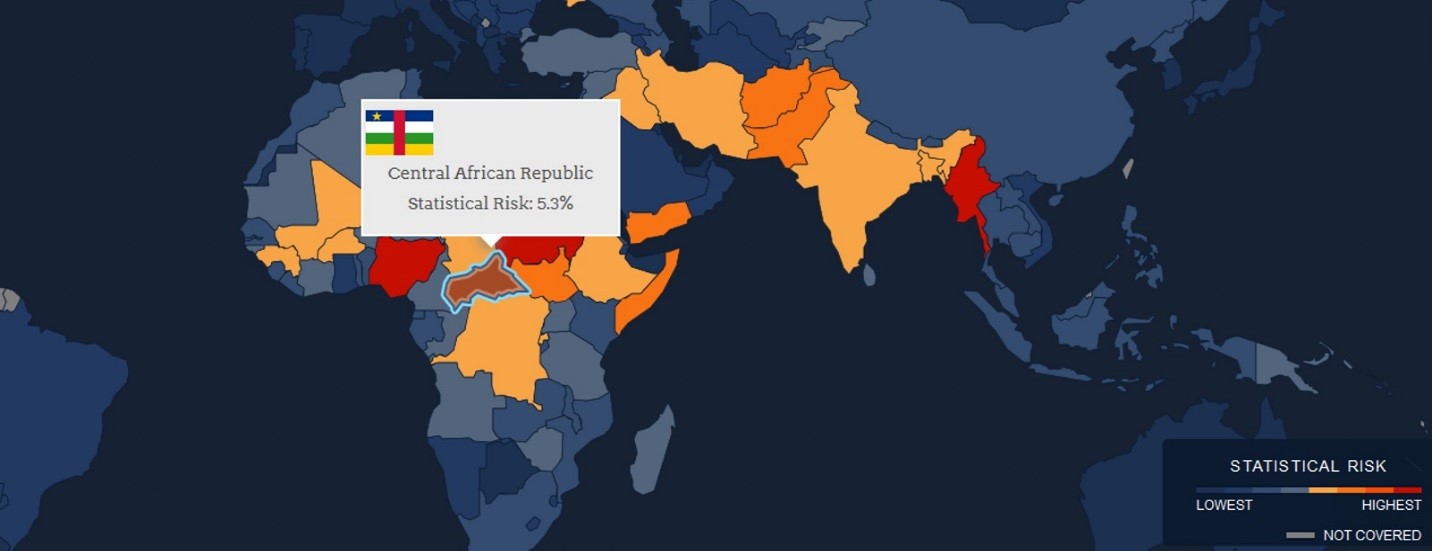October 01, 2015

On Monday, the United Nations issued a statement calling for the immediate end to an escalation of violence in the Central African Republic. Dozens were killed after the murder of a man in Bangui, with many fearing that this could mark a return to the sectarian violence that saw thousands killed since violence began in December 2013.
The New York Times reports:
Some reports, still unconfirmed, said the man’s body had been inscribed with slogans that showed he had been targeted because he was Muslim. The country’s religious divide — Muslims predominate in the north, and Christians in the south — has largely driven conflict in the past, and threatened to do so again.
Rupert Colville, a spokesman for the United Nations human rights commissioner, is quoted as saying “I don’t think one can overestimate the risk of things getting worse.”
The Early Warning Project’s analysis of the risk of mass killing in Central African Republic echoes this assessment. Our 2015 Statistical Risk Assessment, released last week, ranks it fifth and its absolute risk of a state-led mass killing increased from last year to this year. This being said, state-led mass killing remains a highly rare event, even in a country already experiencing an ongoing episode. To assess how this risk might change in light of current events, we rely on regular feedback from our expert opinion pool.
Currently we are asking our experts “Before 1 January 2016, will there be a new episode of mass killing in Central African Republic?” Because mass-killing episodes are defined by their perpetrators and their targets, for this question we are asking if a new one will occur separate from the ongoing episode that begin in 2013 perpetrated by anti-Balaka militia groups. In this case, our September update from the Opinion Pool ranks Central African Republic among the top ten countries most likely to see a new onset. The risk assessed by the pool has increased slightly over the last few days and will be a key way to track changing risk as events on the ground evolve.
In the past, there has been little agreement on what exactly is driving violence in Central African Republic, and why it escalated so quickly in 2013. The recent events and extreme concern expressed by public officials, as well as results from our annual statistical risk assessment and wiki survey, point to underlying structural issues that will continue to keep CAR at high risk of mass killing.
Meanwhile, per the New York Times, “The United Nations peacekeeping force in the country, about 13,000 troops, has been struggling to keep up with its mission. The leaders of armed groups active in that carnage have no interest now in seeing the country stabilize, United Nations officials say.” And in a recent report from the Global Centre for the Responsibility to Protect, Evan Cinq-Mars writes “The crisis has had a particularly devastating effect on the social fabric of the country.”
For now, a UN spokesperson on the ground is reporting relative calm though tens of thousands have again been displaced.
View All Blog Posts